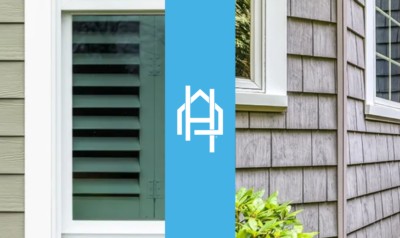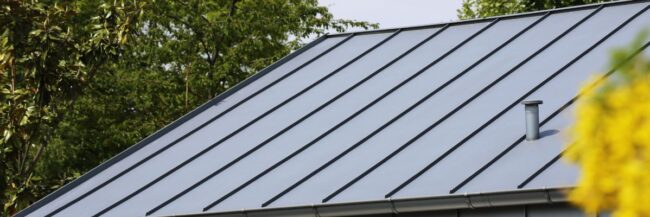Education > Siding
Do You Need a Permit to Replace Siding in North Carolina?
In North Carolina, the primary source of permitting rules for siding replacement is North Carolina General Statute §160D‑1110, along with the North Carolina State Building Code. These regulations clarify that for single-family homes, farm buildings, and certain commercial structures, siding replacement does not require a building permit as long as:
- The work is limited to replacing existing siding.
- No load-bearing structures are being modified or replaced.
- The total project cost is $40,000 or less.
If your project meets these conditions, you can typically proceed with siding replacement without a permit.
The $40,000 Cost Threshold Explained
The $40,000 cost threshold is a key part of the state law. If your siding replacement project exceeds this amount—even if it doesn’t involve structural changes—you will need a permit. This ensures that larger-scale projects get the appropriate oversight for safety and compliance.
Example Scenarios:
- Project cost of $25,000 (no structural changes): No permit required.
- Project cost of $45,000 (no structural changes): Permit required due to exceeding the $40,000 limit.
- Project involving structural changes (regardless of cost): Permit required.
What Qualifies as Structural Work?
Structural work involves changes to elements of the building that support weight or contribute to the overall stability of the home. Examples include:
- Modifying load-bearing walls or beams
- Replacing sheathing that is integral to structural integrity
- Altering window or door openings that require framing changes
If your siding project involves any of these changes, you must obtain a permit, even if the total cost is under $40,000.
Key Takeaways for Homeowners
Here’s a quick summary of what North Carolina homeowners need to know:
- No Permit Required: If siding replacement is purely cosmetic, under $40,000, and involves no structural changes.
- Permit Required: If the project involves structural changes (like modifying load-bearing walls or altering window/door openings) or exceeds $40,000.
- Local Checks: Always consult your local building inspections office for specific local rules or any updates to state guidelines.
Benefits of Compliance
Even if your project doesn’t technically require a permit, following best practices can save you time, money, and headaches:
- Avoid fines: Performing work that requires a permit without getting one can result in costly fines or forced project reversals.
- Ensure quality: Inspections tied to permits help ensure work is done safely and to code.
- Protect future sales: Prospective buyers often want to see permits for major work; lack of proper documentation can create issues when selling your home.
Working with Professionals
Reputable contractors understand state and local permit requirements and can guide you through the process. They can also help you:
- Evaluate whether your project triggers permit requirements
- Provide cost estimates to ensure you stay under the $40,000 threshold (if that’s your goal)
- Coordinate with local inspections offices if needed
How to Get a Permit (If Required)
If you determine that your project does require a permit, the process generally involves:
- Application: Complete a permit application through your local building department.
- Project Plans: Submit drawings or plans showing the scope of work.
- Fees: Pay any applicable fees, which vary by location and project size.
- Inspections: Schedule inspections during and after the project to verify compliance with building codes.
Frequently Asked Questions (FAQs)
Do I need a permit if I’m just painting or cleaning my siding?
No, painting or cleaning siding is considered routine maintenance and does not require a permit in North Carolina.
What happens if I replace my siding without a required permit?
You could face fines, be required to remove and redo the work, and may encounter issues when selling your home.
Can I get help from my contractor with permitting?
Yes, reputable contractors will typically handle any necessary permit applications and inspections for you.
Does the $40,000 threshold include labor and materials?
Yes, the total project cost includes both materials and labor when determining if you need a permit.
Where can I find the latest updates on siding permits in North Carolina?
Contact your local building inspections office or visit the North Carolina Department of Insurance website for updates.
Conclusion
Replacing siding is a valuable investment in your home’s appearance, protection, and energy efficiency. In North Carolina, you generally do not need a permit for siding replacement on single-family homes, farm buildings, or certain commercial properties if:
- The work is strictly cosmetic (no structural changes)
- The total project cost is $40,000 or less
For projects that involve structural changes or exceed this amount, a permit is required. Always double-check with your local building inspections office to ensure compliance and avoid potential headaches down the line. By understanding the permitting rules and working with experienced professionals, you can confidently move forward with your siding replacement project.
Need help navigating siding replacement in North Carolina? Home Genius Exteriors handles all permitting and regulatory compliance for you—ensuring a smooth, stress-free experience. Contact us today to get started!







